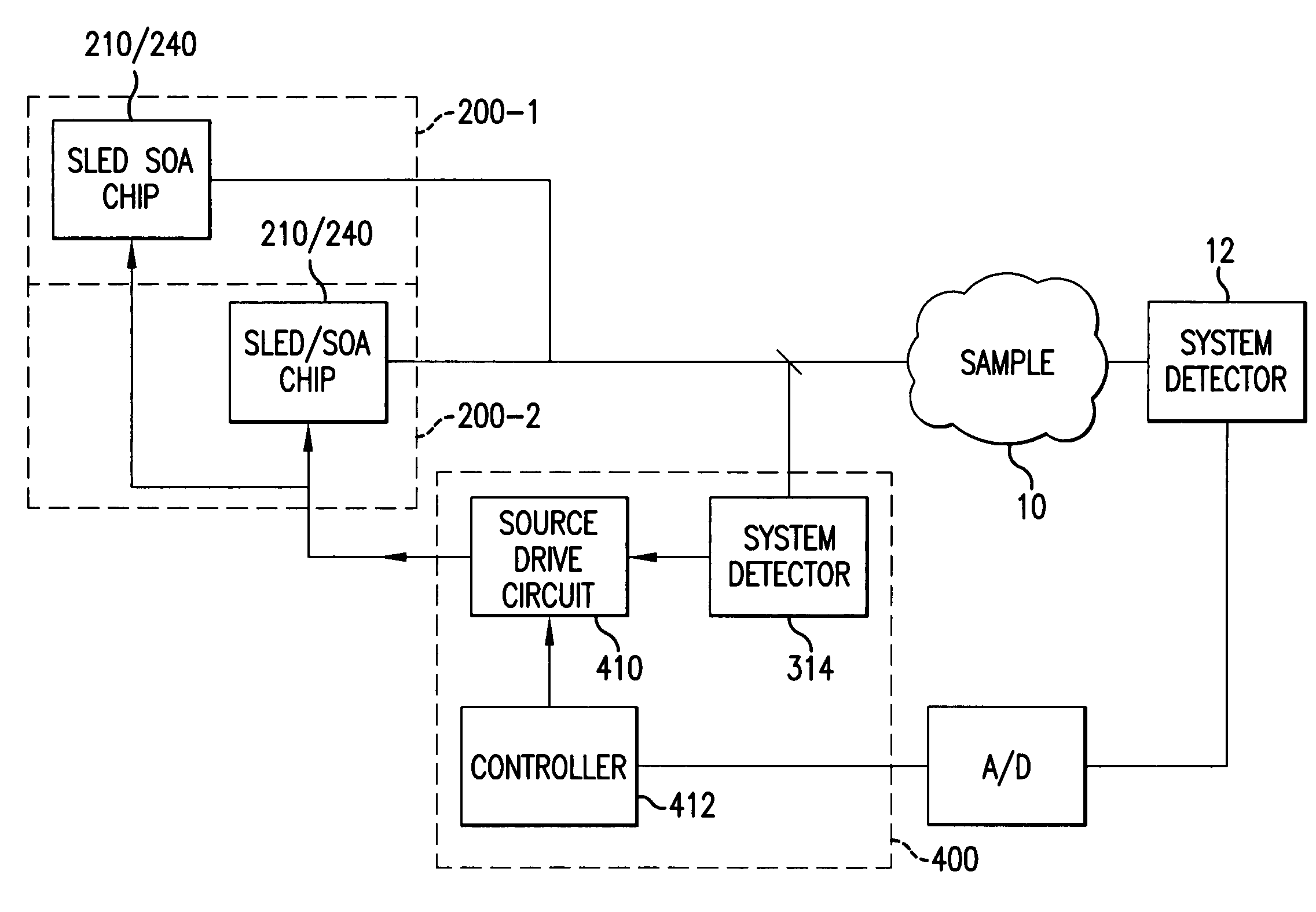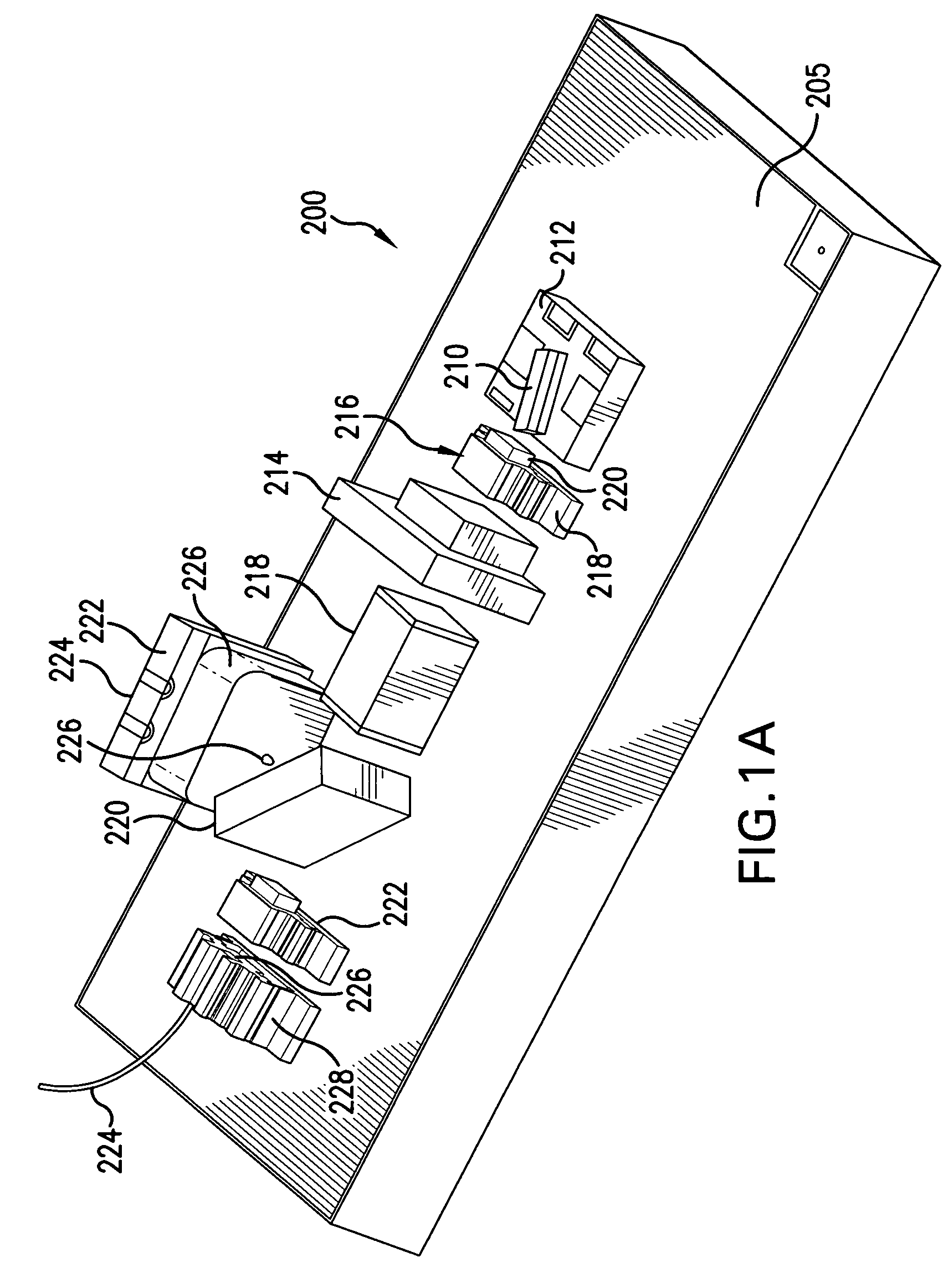Method and system for spectral stitching of tunable semiconductor sources
a technology of semiconductor sources and spectroscopy, applied in the field of tunable source spectroscopy systems, can solve the problems of reducing or degrading power of tunable signals, and achieve the effect of widening the scan band
- Summary
- Abstract
- Description
- Claims
- Application Information
AI Technical Summary
Benefits of technology
Problems solved by technology
Method used
Image
Examples
second embodiment
[0037]FIG. 1B illustrates the tunable semiconductor source 200. In this embodiment, the tunable semiconductor source 200 again comprises an optical bench 205.
[0038]Instead of the SLED chip, however, a semiconductor optical amplifier (SOA) chip 240 is used as the semiconductor gain medium. This chip is also secured to the bench 205 via a submount 212.
[0039]In the illustrated embodiment, the SOA chip 240 is a reflective SOA. Specifically, the SOA chip's back facet 242 has a reflective coating in order to function as a back reflector of the laser cavity of the semiconductor source 200.
[0040]Light exiting from the SOA chip 240 is columnated by a first lens component 216. It passes through an isolator at 244 to a second lens component 246 and then to a tunable filter 214.
[0041]The filter 214 functions to control which of the longitudinal optical nodes have a net gain in the laser cavity of the laser tunable semiconductor tunable source 200.
[0042]Light exiting from the filter 214 is colli...
first embodiment
[0058]FIG. 4 illustrates a first embodiment control system for compensating for the spectral roll-off of the at least two semiconductor sources, e.g., SLED sources 210 or SOA sources 240, over the combined scan band provided by the combination of the tunable signals from the two semiconductor sources 200-1, 200-1.
[0059]Specifically, source one 200-1 is driven by a source drive circuit of a control system 400 including a system detector 314 and a controller 412. In other embodiments, instead of using the system detector 314, the source detectors 224 are used to sample the magnitude of the signals produced by the sources 200-1, 200-2.
[0060]The source drive circuit 410 controls the current to the diode chips, e.g., SLED chips 210 of the tunable SLED of FIG. 1A, or SOA chips 240 of the tunable lasers of FIG. 1B, 1C. The modulation of the drive current maintains the levels of the respective tunable signals at a fixed level such as level 450 of FIG. 3. Specifically, near the limits of the...
PUM
 Login to View More
Login to View More Abstract
Description
Claims
Application Information
 Login to View More
Login to View More - R&D
- Intellectual Property
- Life Sciences
- Materials
- Tech Scout
- Unparalleled Data Quality
- Higher Quality Content
- 60% Fewer Hallucinations
Browse by: Latest US Patents, China's latest patents, Technical Efficacy Thesaurus, Application Domain, Technology Topic, Popular Technical Reports.
© 2025 PatSnap. All rights reserved.Legal|Privacy policy|Modern Slavery Act Transparency Statement|Sitemap|About US| Contact US: help@patsnap.com



